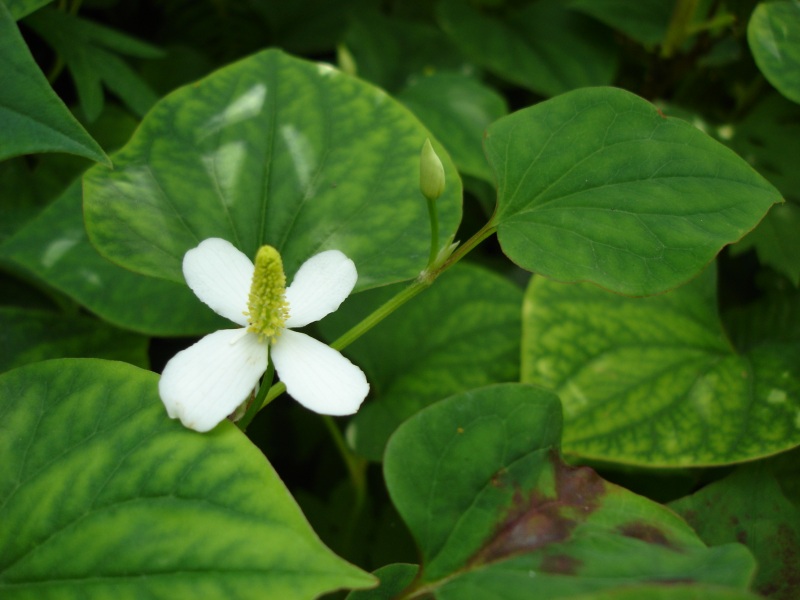Houttuynia Cordata Polysaccharide Shows Promise Against H1N1 and MRSA Pneumonia

Recent research published in the *Acta Pharmaceutica Sinica B* has unveiled the potential of an anti-complement homogeneous polysaccharide derived from *Houttuynia cordata* in treating acute pneumonia caused by the coinfection of H1N1 and methicillin-resistant *Staphylococcus aureus* (MRSA). This study, authored by Dr. Xiang Li and colleagues, emphasizes the polysaccharide's ability to rectify the Treg/Th17 cell imbalance in the gut-lung axis while suppressing the NLRP3 inflammasome pathway, providing a novel therapeutic avenue for managing complex respiratory infections.
The study highlights that respiratory viruses and bacterial coinfections are significant contributors to global morbidity and mortality rates, exacerbating the challenges already posed by antibiotic resistance and vaccine limitations. Despite advancements in medical science, such as the development of vaccines and potent antibiotics, the emergence of coinfections remains a critical health issue worldwide. According to the World Health Organization (WHO), pneumonia is the leading infectious cause of death in children under five years old, underscoring the importance of innovative therapeutic strategies (WHO, 2022).
Dr. Li's research utilized a murine model of pneumonia, demonstrating that the administration of Houttuynia cordata polysaccharide (HCPM) improved survival rates and reduced weight loss in infected subjects. The study indicated that HCPM alleviated gut-lung damage and inflammatory cytokine production, showcasing its multifaceted therapeutic effects.
Mechanistically, HCPM was found to inhibit the activation of intestinal complements such as C3a and C5a, which are crucial in the inflammatory response. Furthermore, it suppressed excessive activation of the NLRP3 pathway, a vital component of the immune response linked to various inflammatory diseases. This modulation of immune regulatory networks is pivotal in addressing the complex interactions between gut microbiota and lung health, as noted by Dr. Sarah Johnson, an immunologist at Stanford University, who commented on the significance of this research in the context of respiratory health (Johnson, 2023).
The implications of this study are profound, particularly in the face of rising antibiotic resistance. According to a report by the Centers for Disease Control and Prevention (CDC), about 2.8 million antibiotic-resistant infections occur annually in the United States alone, leading to over 35,000 deaths (CDC, 2021). The need for alternative therapies, such as those derived from medicinal plants, is more pressing than ever.
Moreover, the therapeutic effects of HCPM on intestinal health, preceding the improvements in pulmonary conditions, provide a new understanding of the gut-lung axis. This connection, which has garnered increasing attention in recent years, suggests that treating gut inflammation could have beneficial effects on respiratory diseases. Dr. Michael Chen, a gastroenterologist at Johns Hopkins University, emphasized that the gut-lung connection is an emerging frontier in medical research, with the potential to unlock new treatment paradigms (Chen, 2023).
As researchers continue to explore the therapeutic applications of natural compounds like HCPM, it opens the door for future clinical trials aimed at evaluating its effectiveness in human subjects. The study’s findings may lead to a re-evaluation of existing treatment protocols for pneumonia, especially in cases resistant to conventional therapies.
In conclusion, the promising results of Houttuynia cordata polysaccharide in treating H1N1 and MRSA-induced pneumonia highlight the need for continued research into plant-based therapeutics. With the ongoing challenges posed by antibiotic resistance, this study presents a beacon of hope for developing effective treatments against complex respiratory infections. Future studies will need to focus on the clinical applicability of these findings, potentially offering a natural alternative to combat the rising tide of antibiotic resistance and improve patient outcomes in respiratory health.
Advertisement
Tags
Advertisement





